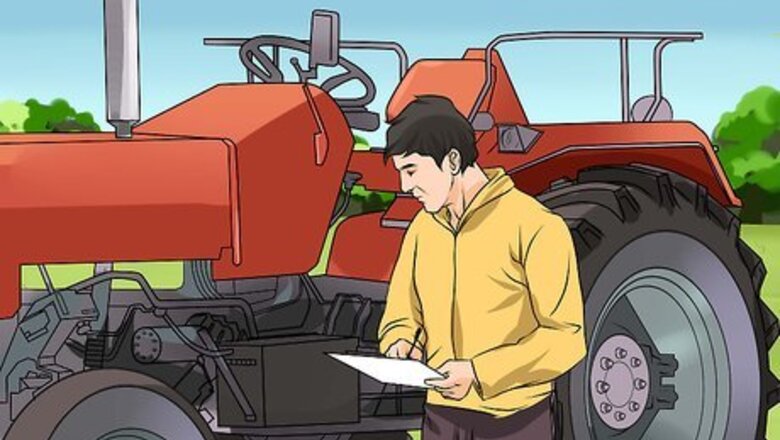
views
Checking the Tractor
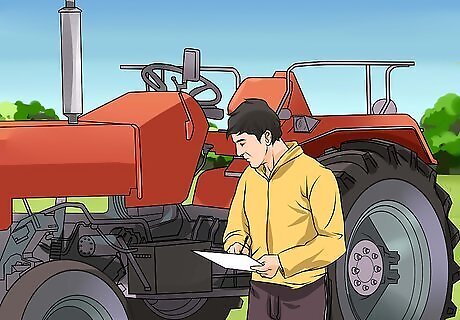
Look for tractor safety issues. Walk around your tractor doing an inspection before climbing on. Loose wheel lugs, nuts, or bolts may need periodic tightening.
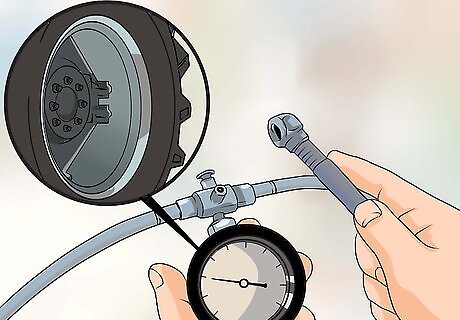
Check your tractor's tire pressure. Low pressure in one or more tires may cause instability and create a safety hazard. If you're not driving your tractor every day, make it a routine to give the tires a quick once-over so you know they're in good shape before you get way out in a field.
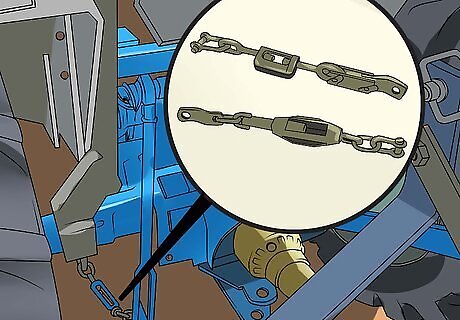
Inspect your stabilizer chains to ensure they are properly secured. Do this when your tractor attachments are behind the tractor.
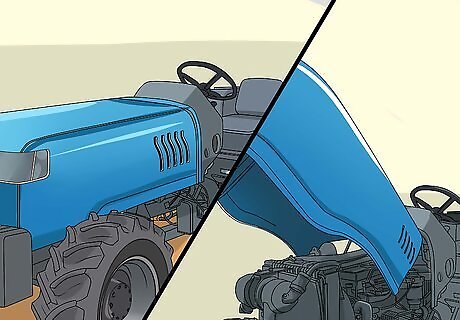
Open the hood of your tractor. Check the cooling system, radiator, and battery levels to make sure they are in the proper range. Make sure you have enough oil and fuel to complete the job or task at hand.
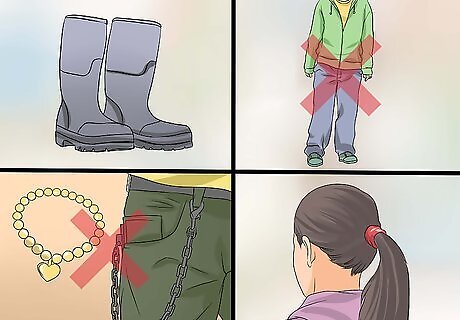
Be safe at all times. Wear good-quality boots with gripping soles, and keep any long hair tied back. Avoid dangling jewelry that could become caught in moving machinery, and avoid wearing loose or baggy clothing while operating a tractor. Always climb into the tractor using the proper hand holds.
Driving the Tractor
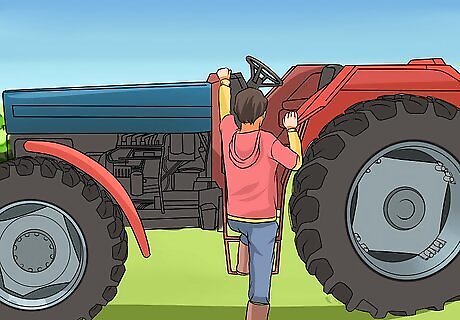
Climb up into the tractor's seat. Familiarize yourself with the controls and find the clutch. Set the seat so you can reach the steering wheel, throttle, and other controls easily with your hands and feet. Wear your seatbelt any time you're going to be around other vehicles. In the field, while it may seem like common sense to buckle your safety belt, you'll find almost no farmers strapping themselves in. More likely than an accident in your tractor will be the need to quickly turn off the engine and hop out and do something that needs doing. The safety roll bar will help to prevent serious injury. Practice good tractor safety and drive safely.
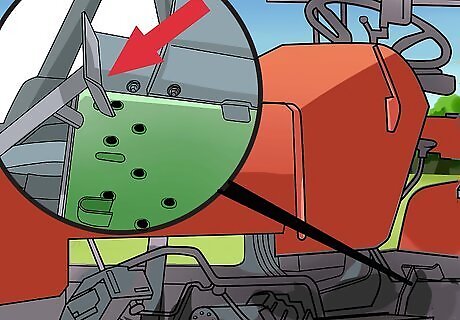
Press the clutch pedal down to the floor with your left foot. You want to be sure the transmission is neutral as you turn it over.
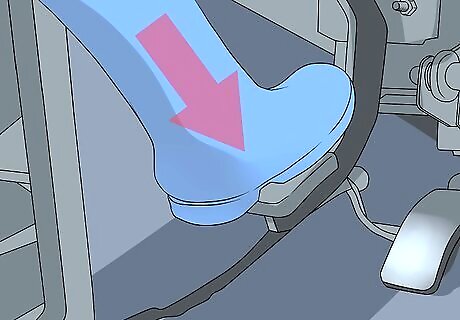
Engage the break with your right foot. Turn the key forward to start the engine. When it turns over, drop the throttle slightly (without killing it) to let the engine warm up a little. If you jump straight from turning it over to driving, you'll likely stall.
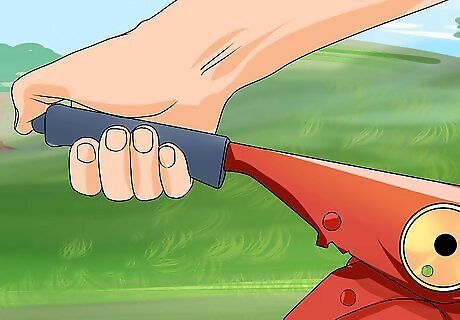
To drive, release the tractor's parking brake. Continue holding the clutch to the tractor floor and put the transmission into first gear.
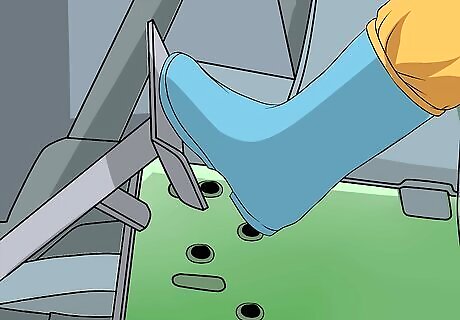
Slowly lift your foot off the clutch. Just as with any manual transmission, you want to be slow and smooth as you let the clutch out. It's a lot easier since you don't have to be actively pushing the gas. Keep the throttle at a low setting and take your foot off the brake.
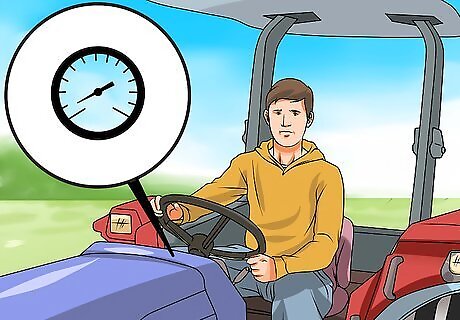
Maintain a uniformly slow speed. Tractors aren't made for going particularly fast, they're made for durability and power. Don't push it. Go slowly, treating turns, curves, and hills with special caution. Especially if you're using attachments and other hardware, go extremely slowly and use precaution when executing turns. Tractors also generally lack suspension, so driving quickly on the rough ground will likely result in you getting bounced around.
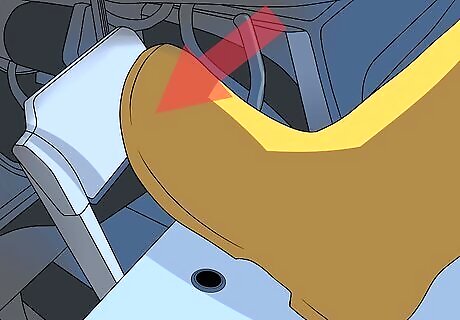
To stop the tractor, press the clutch to the floor completely. Switch the gears to neutral and set the parking brake. Slow the throttle. Put all implements on the ground. Turn the tractor key to the off position to stop the tractor engine. If you are parked on a steep hill, you will want to leave the tractor in a low gear to keep it from rolling in case the parking brake fails.
Using the Tractor
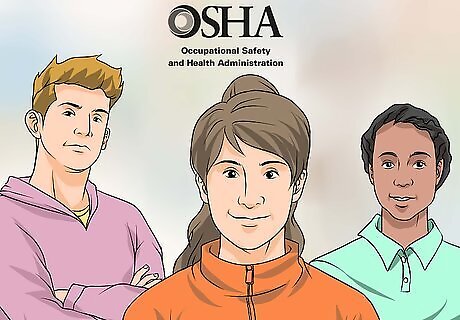
Make sure all operators are trained and familiar with the tractor. For farm hands or employees younger than 16, familiarize yourself with OSHA labor standards regarding child labor. Some jobs involving heavy machinery are too dangerous to be performed by less experienced workers. "HO/A #1 The FLSA prohibits youth under 16 years of age from operating a tractor of over 20 PTO (power-take-off) horsepower, and from connecting or disconnecting implements or parts to such a tractor." In some places, it's necessary to obtain a registration to drive your tractor on the road (the UK and Australia, for example) while many other regions forego registration as long as your tractor displays reflective caution tape and is clearly visible.
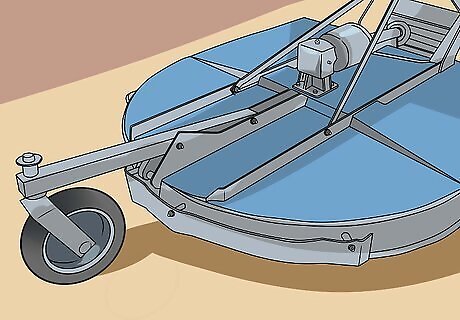
Outfit your tractor with a brush mowing attachment. For heavy-duty weed control and maintenance of rough areas of your property, it's useful to get a mowing attachment to eliminate invasive weeds and brush.
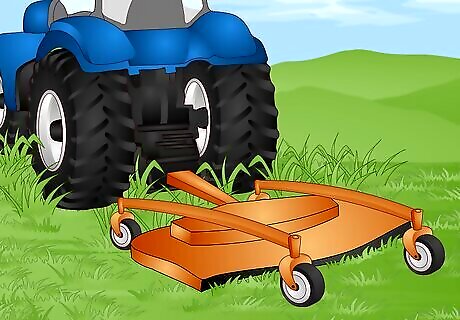
Install a finish mower to turn your tractor into a large ride-on mower. Many smaller tractors will come with a finish mower mounted underneath (a belly mower). Alternatively, a finish mower can be put on the 3-point hitch. Belly mowers allow for a tighter turn radius and make it easier to mow around obstacles. Rear mowers are faster and easier to add and remove. Don't use finish mowers for brush mowing. They have rigid blades and can be damaged if they hit a stump, rock, or other immovable object.
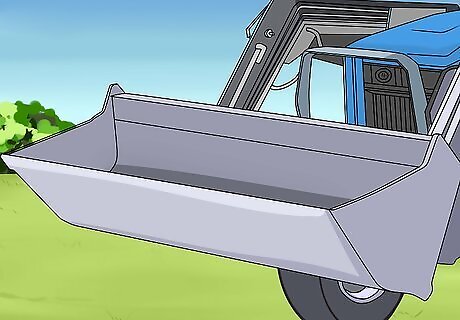
Learn how to use your front-end loader. Most Kubotas and other common smaller tractors have a wide variety of attachments, including buckets that will make your tractor into a kind of small-scale backhoe. You can haul brush and other junk around your property. Follow proper driving safety when using a bucket. Never drive with the bucket in full "up" position, but always remember to raise it into the drive position so it's not dragging in the mud. Make sure to add some weight to the back of the tractor when lifting heavy loads with the front-end loader. This can be wheel weights, a ballast box, or an implement. If you want to dig in rocky soil, you will likely want to add bucket teeth. If you live in an area with frequent, heavy snowfalls, you may wish to replace the bucket with a snow plow. If your tractor does not currently have a loader, it is possible to add one, however, it is very expensive.
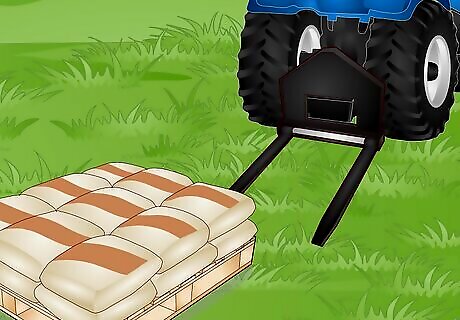
Add some forks to your tractor. If your tractor has a front-end loader, it can be fitted with forks. You can use them for moving large, heavy items around your property, such as oil drums, logs, boards, and pallets -- effectively turning your tractor into an all-terrain forklift. If your tractor does not have a front-end loader, you can install forks on the 3-point hitch instead.
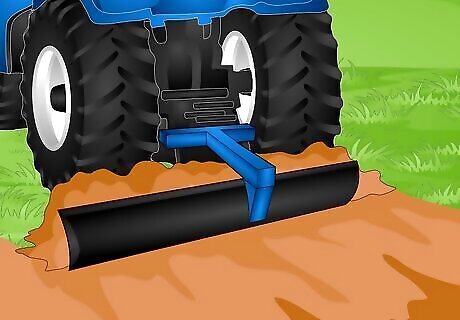
Install a back blade. Back blades are one of the most versatile implements for your tractor. They have a wide variety of uses, including (but not limited to): grading a gravel driveway spreading soil digging a swale bulldozing snow removal
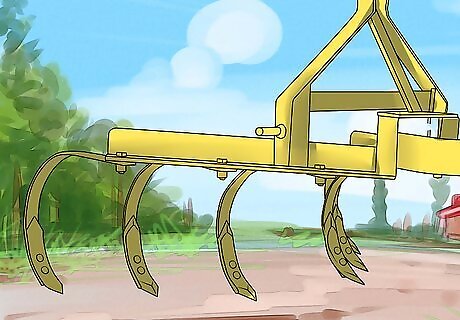
Use cultivator attachments on larger tractors to plow for planting. If you've got a row to hoe, the job is much easier with a cultivator to break up the dirt and help plant your crop.
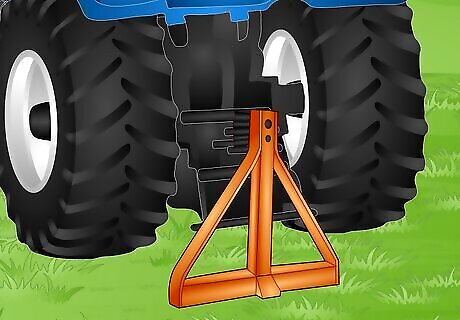
Install a hitch receiver. You can put a trailer hitch either on the three-point hitch or on the front-end loader. Both locations allow you to easily adjust the hitch to the height required for properly towing the trailer, and allow you to quickly attach/detach trailers without needing to jack the tongue. Installing the hitch on the rear is better for towing trailers long distances. It is also better for moving trailers with a lot of tongue weight. Putting a hitch on the front improves visibility if you need to push a trailer into a confined space.
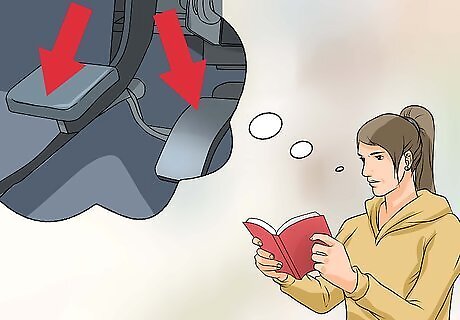
Make sure any attachments heavier than the tractor itself have independent brakes. If you're using tractor attachments, you'll need to be especially careful to drive extremely carefully and use the guidelines outlined in the owner's manual for each implement, attachment, or device. Make sure that heavier attachments are outfitted with independent brakes in good working condition, and learn to use them.
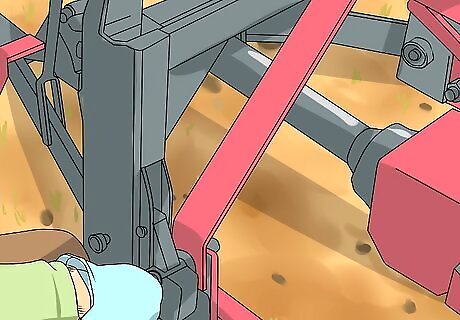
Hitch all attachments properly. Make sure to follow proper safety precautions while hitching your tractor to wagons or other farming implements: Make sure that the area in front and behind, making sure especially that no one is behind the tractor Back the tractor up slowly Practice a safe stop, applying the emergency brake Put the transmission in neutral Dismount the tractor and hitch up
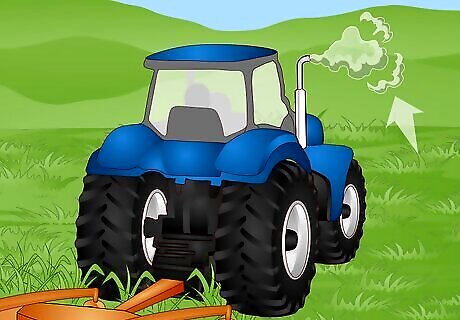
Watch your exhaust stack. Ideally, the tractor should emit very little to no smoke while it's in use. If smoke is coming out, pay attention to the color. Black smoke from the exhaust means the engine is getting more fuel than it can handle, and the extra fuel is not being completely burned. To resolve this, try either gearing down and increasing RPMs to reduce the load on the engine, or cleaning the air filter to ensure the engine is getting enough air. If the tractor is still smoky, one or more fuel injectors may be stuck open and need cleaning or replacement. Grey smoke consists of atomized diesel fuel that didn't get hot enough to burn. A small amount of grey smoke after a cold start is normal and should go away when the engine warms up. However, if the smoke persists when the engine is hot, there's a good chance one or more cylinders have low compression, often due to an exhaust valve being stuck open. Blue or white smoke is a sign of engine damage and should be addressed immediately. Blue smoke means the engine is burning oil, often due to worn rings. White smoke often means coolant is leaking into the engine due to a blown head gasket.
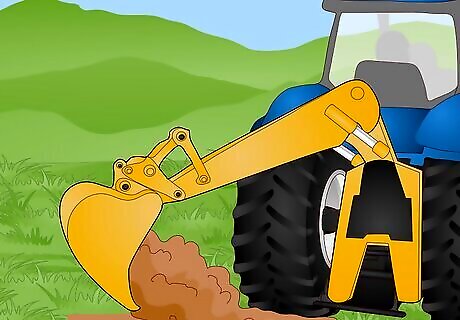
Research other useful implements. There are dozens of implements on the market for tractors, including box scrapers, log splitters, wood chippers, branch loggers, backhoes, bale spears, hay rakes, logging winches, salt spreaders, snow blowers, and more. If you have a welder, you can build custom implements, limited only by your tractor's power and your imagination.
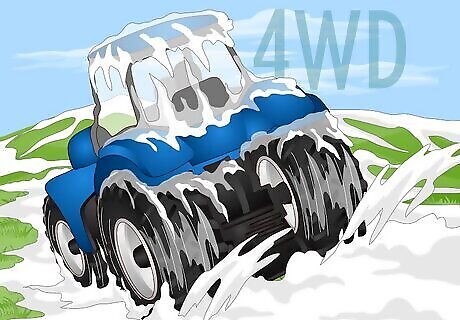
Learn how to get extra traction. Sometimes you may have to operate the tractor in environments with poor traction, such as snow or deep mud, resulting in the machine becoming stuck. Many tractors have independent brakes for the left and right back wheels. Try applying some brake to the slipping wheel. Alternatively, try locking the rear differential (often a foot pedal activated by your right heel). This forces both back wheels to turn at the same speed, which can be useful if one wheel has traction and the other doesn't, or if you're driving across a slope. Be aware that doing this will make cornering difficult, as the tractor will want to drive in a straight line. Put the tractor in four-wheel-drive if equipped. This can be especially useful if you have a heavily loaded bucket. Make sure to turn off the four-wheel-drive on hard surfaces, as it will cause increased wear on the transmission.




















Comments
0 comment